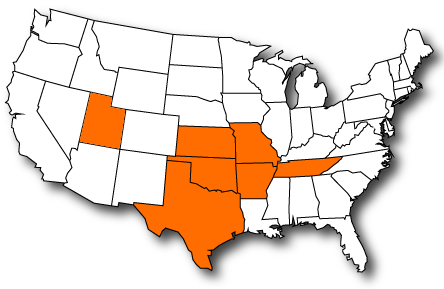Pet ownership brings immense joy and companionship to our lives. Our furry friends become cherished members of our families, offering unconditional love and support.
However, just like humans, pets can face unexpected health challenges, including the need for surgery. This is where pet insurance comes into play. In this comprehensive guide, we’ll explore the intricacies of pet insurance and delve into the question: Does pet insurance cover surgery?
Understanding Pet Insurance
Understanding pet insurance is essential for every pet owner in Arkansas. This financial safety net offers peace of mind by helping to manage the costs of veterinary care. Just like human health insurance, pet insurance provides coverage for various medical expenses, ranging from routine check-ups to surgeries.
It comes in different coverage levels, including accident-only, illness-only, and comprehensive coverage. While accident-only coverage focuses on emergencies resulting from accidents, illness coverage extends to various diseases and infections. Comprehensive coverage combines both accident and illness protection.
When it comes to surgeries, pet insurance policies can cover procedures related to accidents and illnesses, depending on the chosen coverage level and policy terms. However, pre-existing conditions are generally excluded, and waiting periods might apply before surgical coverage becomes effective. Selecting the right policy involves considering your pet’s needs, budget, and the reputation of the insurance provider.
When your pet requires surgery, the claim process typically involves visiting a veterinarian, obtaining a treatment plan, filing a claim, and awaiting claim evaluation and approval. Understanding pet insurance empowers pet owners to provide their beloved companions with the best possible care while managing unexpected veterinary expenses.
Types of Pet Insurance Coverage
Pet insurance coverage comes in various types, each tailored to different aspects of your pet’s healthcare needs. Accident-only coverage is designed to address unexpected mishaps like injuries and emergencies, providing financial assistance for treatments and surgeries resulting from accidents.
Illness coverage goes beyond accidents to include medical conditions, infections, and diseases, often covering surgical procedures related to these health issues. Comprehensive coverage combines both accident and illness protection, offering a broader safety net for a wide range of medical situations, including surgeries.
Another type of coverage is wellness coverage, which focuses on preventive care such as vaccinations, dental cleanings, and routine check-ups. However, surgical procedures due to accidents or illnesses might not be included in wellness coverage.
It’s crucial to assess your pet’s specific needs and your budget to choose the most appropriate coverage. Remember that some policies may have waiting periods before certain coverages, including surgeries, take effect. Understanding these types of pet insurance coverage empowers pet owners to make informed decisions that ensure their furry companions receive comprehensive care when it matters most.
Surgical Coverage in Pet Insurance
Surgical coverage is a pivotal component of pet insurance, providing financial support for a range of surgical procedures that your pet might require. The extent of surgical coverage varies based on the type of policy and coverage level you choose. Policies with accident and illness coverage often encompass surgeries related to accidents (such as fractures and wounds) and illnesses (like tumor removal or organ surgeries).
However, it’s essential to be aware of certain factors. Pre-existing conditions, those your pet had before obtaining insurance, are usually excluded from coverage, including any associated surgeries. Additionally, many policies have waiting periods, during which surgical coverage might not be effective immediately after enrollment.
Coverage limits and deductibles are crucial to understand, as they affect your out-of-pocket expenses and the maximum amount the insurance company will reimburse for a surgical procedure. Reading policy documents thoroughly helps you grasp the specifics of surgical coverage, ensuring you’re prepared to provide your furry friend with necessary medical attention without shouldering an overwhelming financial burden.
How to Choose the Right Pet Insurance Policy
Choosing the right pet insurance policy requires careful consideration to ensure your furry companion’s well-being and your financial peace of mind. Start by assessing your pet’s needs – their age, breed, and potential health risks. Determine your budget for monthly premiums and potential deductibles, keeping in mind that a balance between affordable premiums and comprehensive coverage is crucial.
Examine the policy’s exclusions and limitations, especially concerning surgical procedures. Look into the insurance provider’s reputation and customer reviews to gauge their reliability in settling claims promptly. Confirm whether the policy allows you to choose any licensed veterinarian or if there’s a network to select from.
Comparing coverage levels is essential. If your pet is young and active, accident coverage might be vital. For older pets, comprehensive coverage could provide essential support for surgeries related to age-related illnesses. Study waiting periods, as they might affect when surgical coverage becomes effective after enrollment.
Informed decision-making ensures your pet’s health needs are met without undue financial strain. By weighing your pet’s requirements against policy features, you can select a pet insurance policy that offers the right balance of coverage and affordability, safeguarding your pet’s health and your peace of mind.
Making a Claim for Surgical Procedures
Claiming surgical procedures under your pet insurance involves several steps to ensure a smooth reimbursement process. Begin by visiting a licensed veterinarian for a thorough examination and diagnosis, which will determine if surgery is necessary. Obtain a detailed treatment plan, including the estimated surgical cost and any required pre-surgical tests.
Once you have the necessary documentation, contact your pet insurance provider to initiate the claims process. Typically, you’ll need to submit the treatment plan, medical records, and any other requested information. The insurance company will review your claim to ensure it meets the policy’s criteria for coverage.
If the claim is approved, the independent insurance company will reimburse you according to the terms of your policy. Keep in mind that you might need to pay the deductible before receiving reimbursement. It’s crucial to understand your policy’s claim submission guidelines and any deadlines associated with the process.
Being organized and proactive when claiming surgical procedures can streamline the process and help you receive the financial assistance you need to provide your pet with the necessary medical care.
Final Thoughts
Pet insurance can be a lifesaver when it comes to managing unexpected veterinary expenses, including surgical procedures. The coverage for surgeries largely depends on the policy you choose and the circumstances surrounding the surgery.
By carefully evaluating your pet’s needs, your budget, and the terms of various policies, you can make an informed decision that provides the best possible care for your furry companion.
Remember that early enrollment, understanding waiting periods, and staying informed about coverage details will help ensure that you’re prepared for any unforeseen medical challenges your pet might face.
Get a free quote on pet insurance in Arkansas by calling G&G Independent Insurance today!


